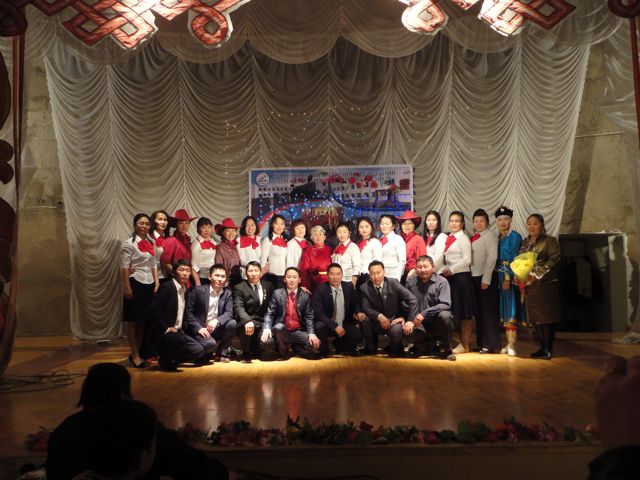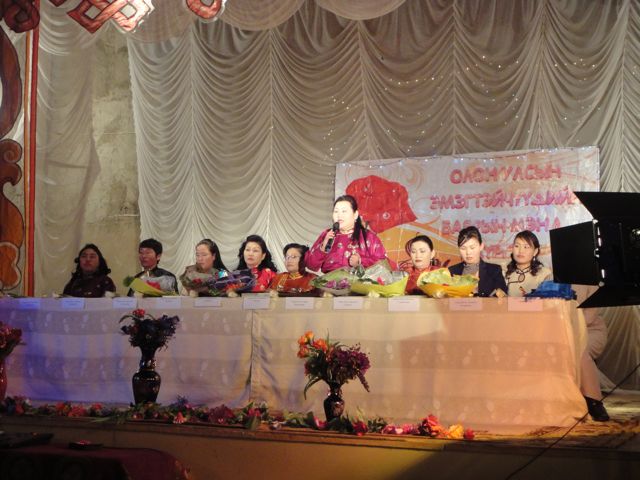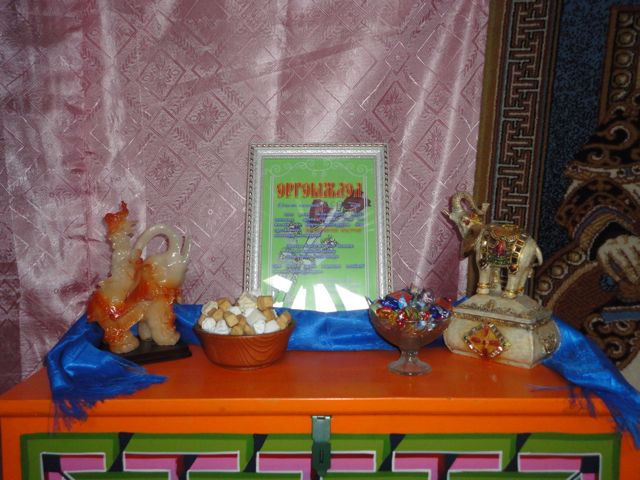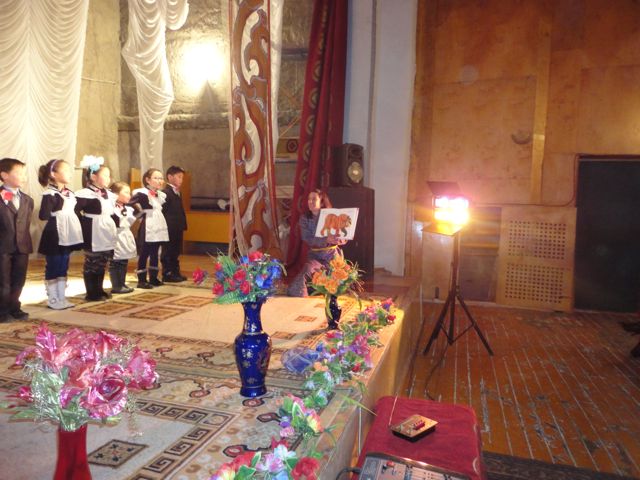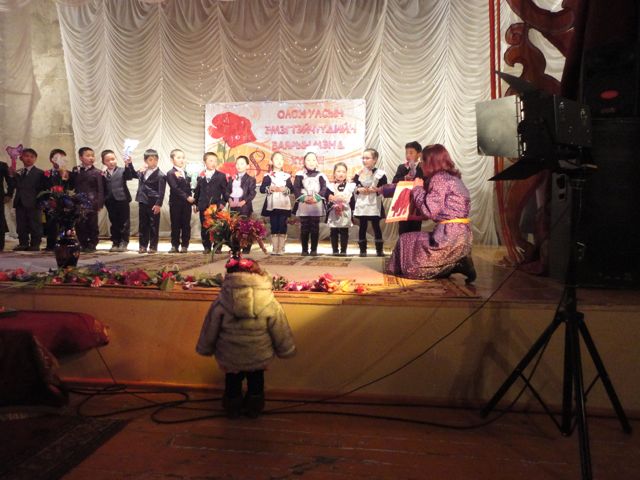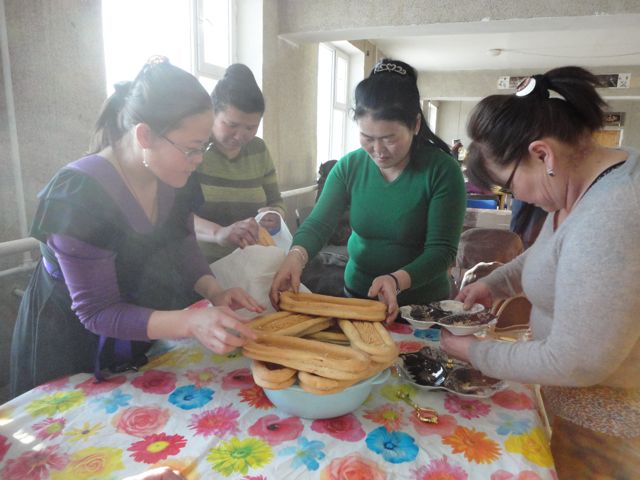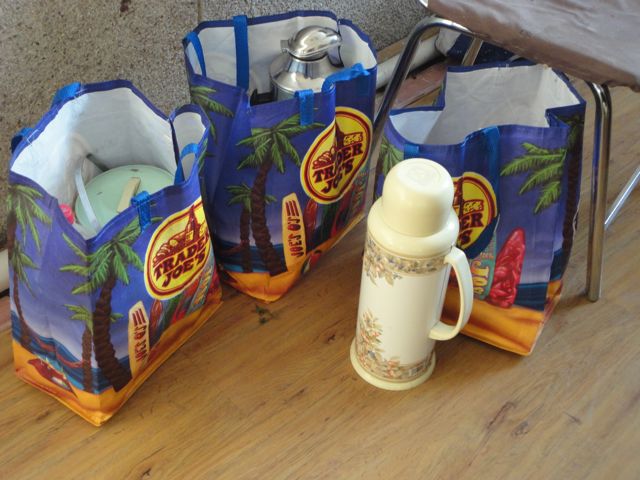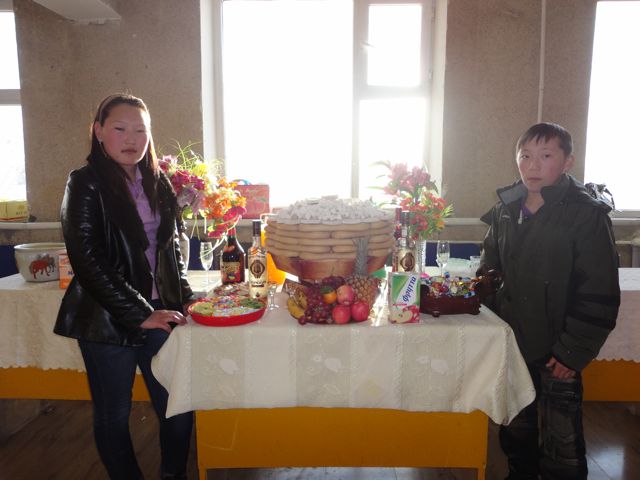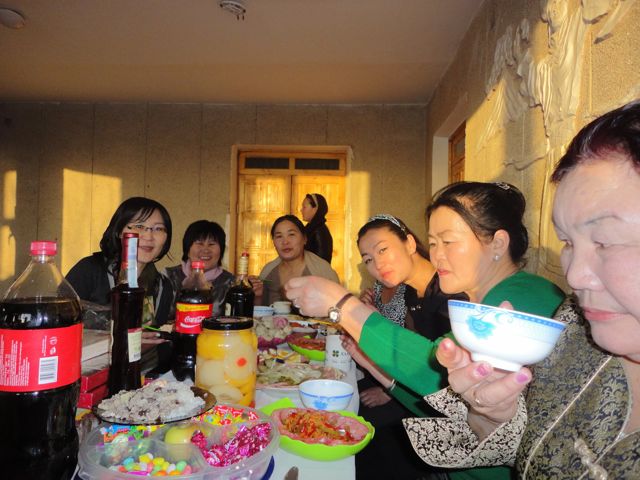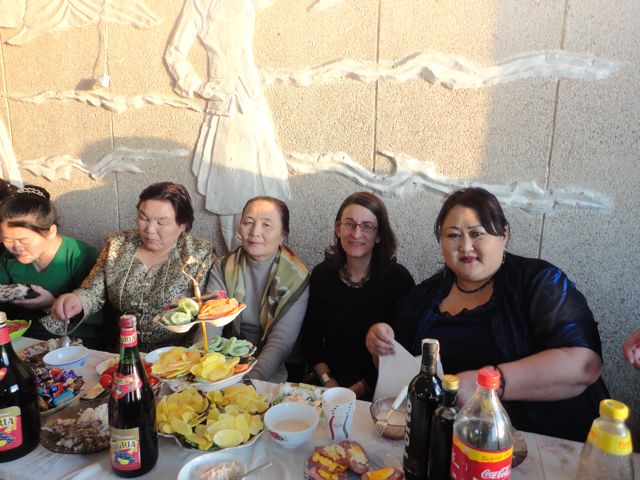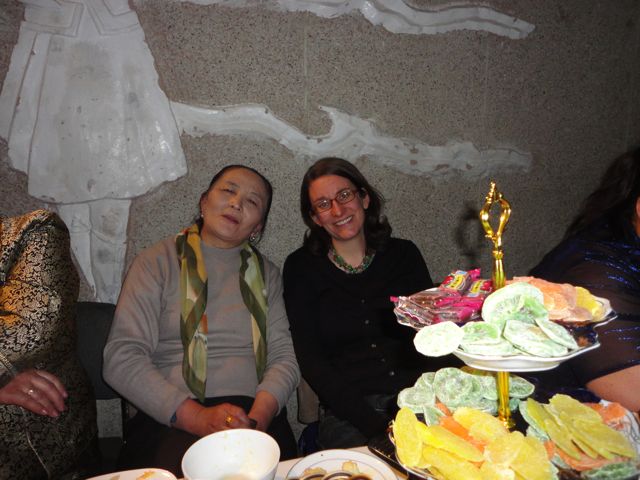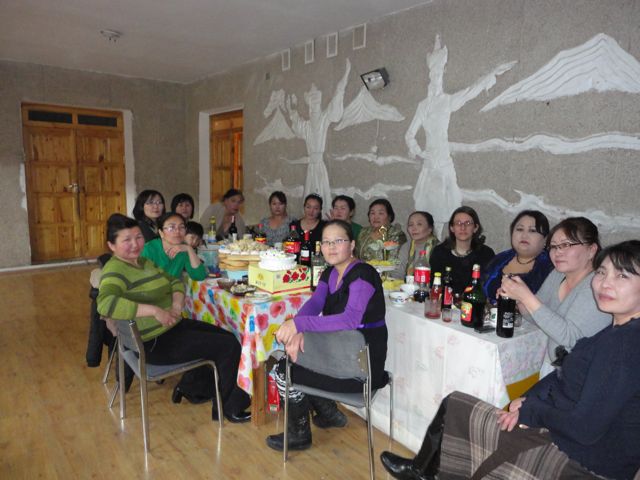2012, the year of the Dragon, was our 6th Tsagaan Sar celebrated in Mongolia. It was also our most educational and enjoyable.
When we were volunteers we didn’t fully comprehend the point of Tsagaan Sar. It mostly seemed like a week of being forced to eat meat, drink vodka, and visit people’s homes we didn’t really know. We didn’t understand the religious connections or the seemingly excessive spending on food, drinks, and gifts. This lack of knowledge carried over to when we lived in Ulaanbaatar where we stayed at home as much as we could during the holiday. We just didn’t get it.
This year we had our very own cultural ambassador living next door, Darkhuu, as well as much better Mongolian language skills. We saw how she started sewing dells, cleaning literally everything she owned (like the underside of cabinet drawers) and making buuz (Mongolian meat dumplings) weeks before Tsagaan Sar started. We went shopping in the aimag capital a week before the holiday and bought white foods for our idee (see pictures below), purchased a few additional gifts to give people, and helped carry Darkhuu’s 5 kgs of potatoes-enough to make potato salad for a small army.
We learned a lot about the customs of Tsagaan Sar this year. The day, and especially the night before Tsagaan Sar, is a day for people to finish their preparations, to have dinner with their family, and to build their idees. Darkhuu helped us construct our idee with a bowl, 9 pieces of fried bread and a bunch of candy and dairy products about 5 P.M. on the 21st. (Between 4 and 7 were the best times to prepare food)

When it had gotten dark outside we placed three pieces of ice, some small pieces of dairy from our idee, and small sticks on our roof. This seemed to be something done specifically for the year of the dragon as determined by the Lamas, but I couldn’t figure out much else about it. Here is Uka putting the bits on Darkhuu’s roof.

And here are the bits Brian put on our ger.

That night we shared dinner with Darkhuu, Uka, and Tsend Ayoush-it felt a lot like Christmas eve to me.
The next morning, dressed in our finest dells, Darkhuu, Brian, and I went over to the culture center for a community greeting ceremony. Whenever you see someone for the first time after the start of Tsagaan Sar you are expected to greet them. Whoever is younger puts their arms under the other person’s and then you lean in for a sniff on each check. People will ask if you are resting well, if you are collecting lots of gold, if you are having a nice new year; etc. Here is a blurry picture of me greeting one of Darkhuu’s sisters so you can get the general idea.

Anyway, back at the culture center the governor handed out awards including the “9 Famous Hanhongor Citizen” awards for 2012. I won this award in 2009 and it was fun to see one of my co-workers win it this year. After the awards ceremony there was a scramble and by the time Brian and I realized what was going on, everyone had lined up roughly in order of age with the youngest at the end of the line. Kind of like a snake turning itself inside out, the middle of the line moved toward the front of the room greeting people who were older than them. Once they had greeted all those older, they got on the outside of the line so that everyone younger than them could greet them. Brian and I, being youngsters were near the end of the line and it took us about 10 minutes to greet all of the approximately 70 people in attendance. After all the greetings everyone sat down for some chatting, snuff bottle exchanging, and camel milk. It was a really nice get together organized by the town government.

Once we got back home we went next door and formally greeted Tsend Ayoush and Uka. The rest of the day was spent handing out small gifts to kids who came to our ger. Sort of like Halloween kids spend the entire first day of Tsagaan Sar going from house to house collecting candy, money, little toys; etc. It was pretty funny when kids would come to our ger. On one hand the rumor had gotten out that we gave out really good gifts but on the other hand we had a dog in our ger! Here is a group of kids who braved their fear of dogs but were still not totally convinced that they weren’t going to get eaten.

The next two days, appropriately called New Year day 2 and New Year day 3, were spent visiting the houses of our friends and having them visit us. Since we don’t eat meat we served a mix of store bought and homemade cookies, fresh and dried fruit, candy and tea.


Here we are visiting Tsetsegbadam’s house, one of the teachers at my school, with Emma and Darkhuu.

and hosting Mandakh, a school worker, and Bold, the school director, at our house.
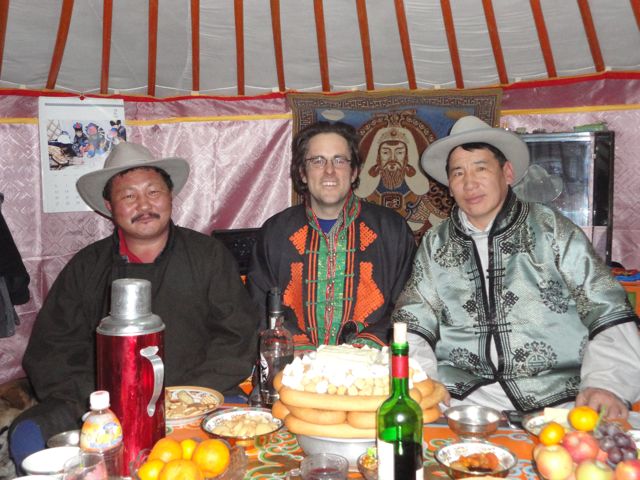
We spent a lot of time at Darkhuu’s and enjoyed ogling the fattest baby in the world and his older sister.


We also enjoyed the horse races and shagai contests that our community held. The races were held about 500 meters from town but since no one walks here if they can help it we were given rides out to see the finish of all three races.
The starting line

The celebratory vat of camel milk

Bundled up riders


A horsetail prepared for the race

The races starts by a car or cars leading the horses out 10-20 kilometers, the length of the race depending on the age of the horses and the time of the year.

Then everyone waits around until the lead car returns with the first horse running behind it.

The horses come in small groups and sometimes even a dog will enter the race.



The last race of the day was exceptionally exciting since the lead horse at the last minute decided to run past the finish flags on the outside instead of on the inside of the course. This apparently was unacceptable as we then saw the rarity of a Mongolian man running as he caught the horse and dragged it back through the finish line the right way just before the second place finisher came in.
After the race the horses are quickly cleaned off since in the -20C weather the sweat can be very dangerous.

The other community event in Hanhongor this year was a shagai, or sheep ankle bone, shooting competition in the school gymnasium. The teams seemed to be based on age. For example, one team consisted of grandpas, one of middle age dads, and one team of 10th and 11th grade students. Three teams competed in each round with two teams waiting at any given time. The teams who were waiting would sit on either side of the target and make as much noise as possible to throw off the shooters. The third team sat in a row on the other side of the gym and either shot at the target by flicking the bones off a flat piece of wood, or using a sort of gun. Points were awarded based on accuracy and method of shooting.



Overall Tsagaan Sar 2012 was very restful, educational, and enjoyable, and Brian and I both are looking forward to next year with our new eyes.
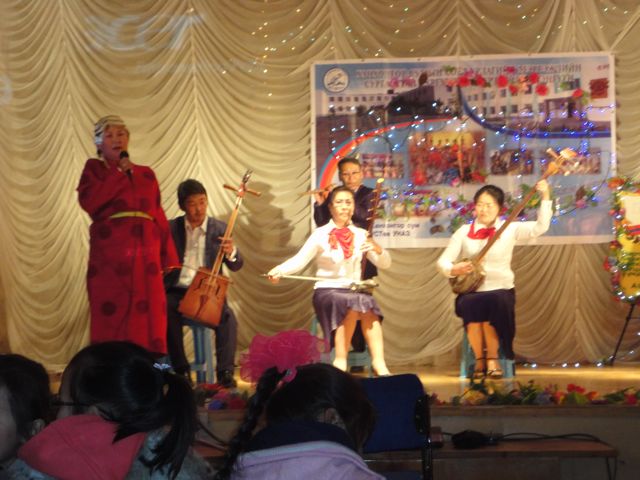
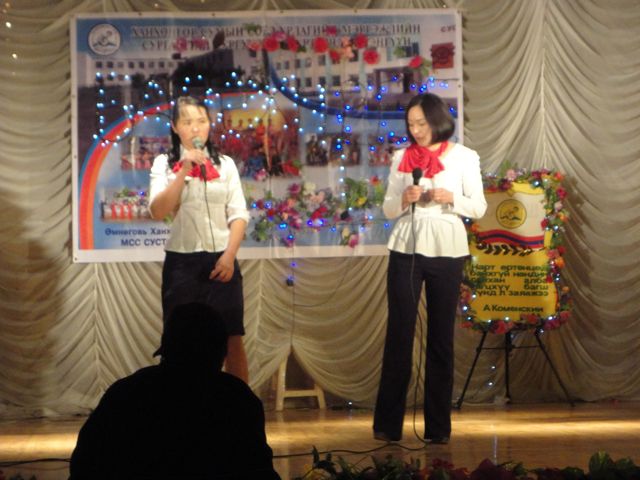
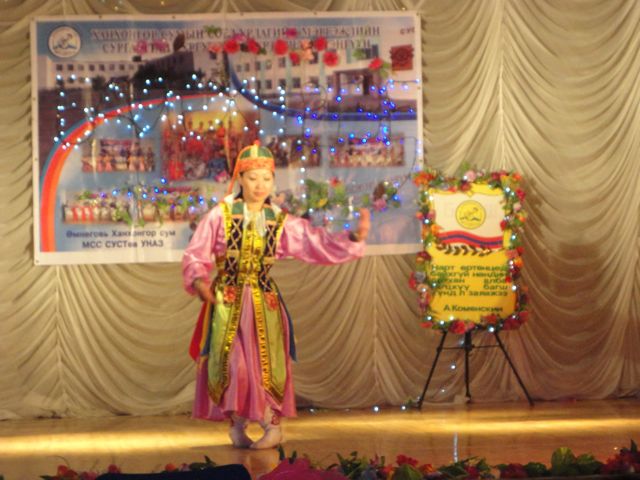
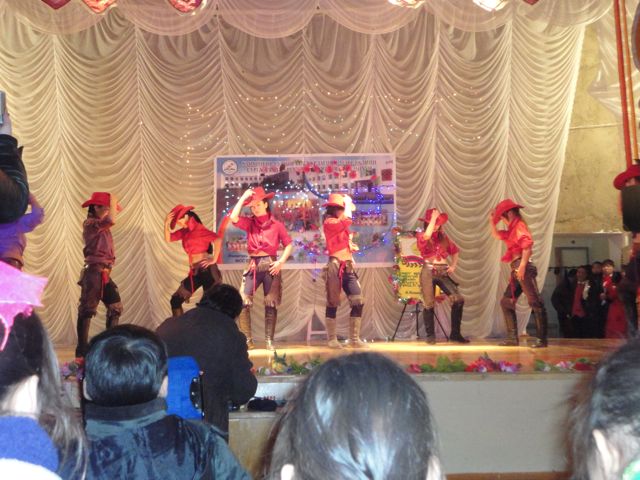
 All the wonderful performers
All the wonderful performers